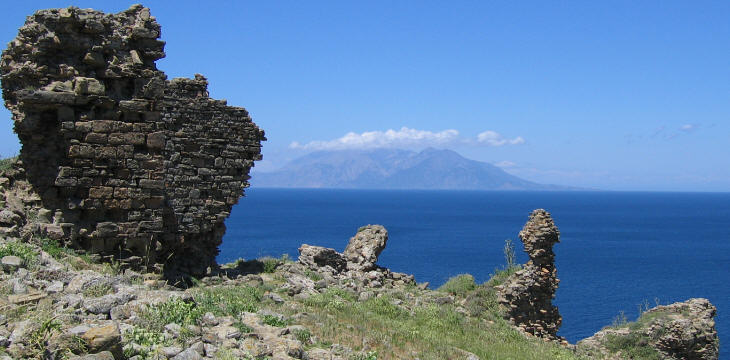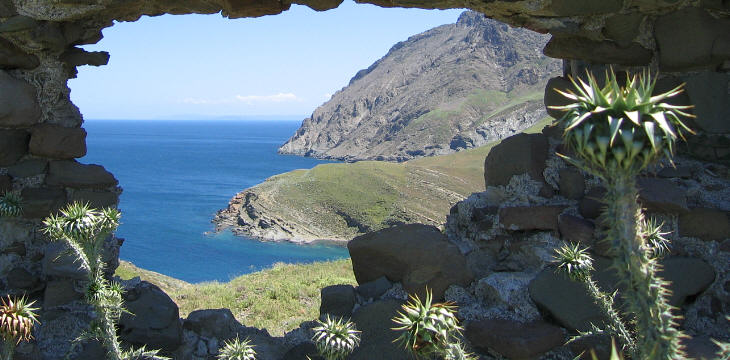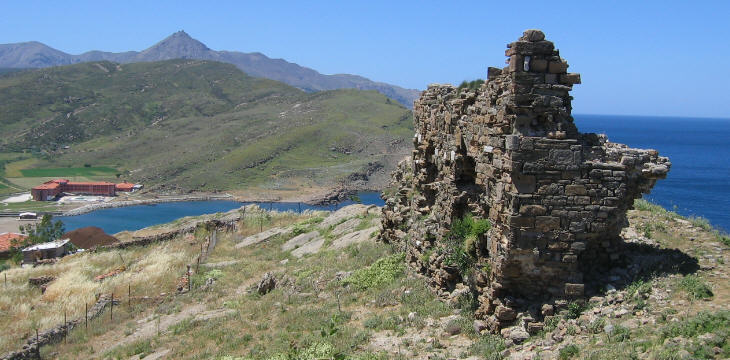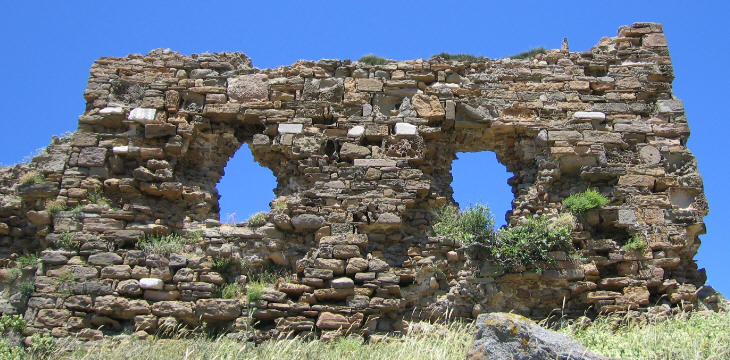  What's New! Detailed Sitemap All images © by Roberto Piperno, owner of the domain. Write to romapip@quipo.it. Text edited by Rosamie Moore. |
|
 | ||
A causa della sua posizione strategica il sultano Maometto II la occupò nel 1456, poco dopo avere conquistato Costantinopoli. Una piccola baia sulla costa settentrionale dell'isola ne costituiva il principale punto di accesso: essa era protetta da un castello costruito sulle rovine di una antica acropoli. Da lì si ha una splendida vista sulla montagnosa Samotracia, l'isola nota sopratutto per la Vittoria Alata oggi al Louvre.
 | ||
Il castello fu rafforzato dagli Ottomani dopo il 1657, ma non abbastanza da impedire ai Veneziani di occupare nuovamente l'isola nel 1698 e ancora nel 1717 negli ultimi giorni della settima e ultima guerra tra Veneziani ed Ottomani.
 | ||
Imbro fu al centro di nuovi combattimenti durante la guerra tra Russi e Ottomani del 1768-74, quando il Principe Vasili Orlov (o Orloff), al servizio dell'Imperatrice Caterina, non riuscì a sollevare la Grecia intera contro il Sultano ma conquistò alcune isole che tornarono poi sotto il controllo ottomano nel quadro degli accordi di pace.
 | ||
Nel 1915 l'isola fu occupata dagli Anglo-Francesi e utilizzata come quartier generale dal Generale Sir Ian Hamilton, che comandava le operazioni a Gallipoli.
Le vicende di Imbro continuarono negli anni seguenti quando fu assegnata alla Grecia e poi inclusa nei confini della Repubblica Turca. La popolazione era prevalentemente greca e nel corso dei decenni seguenti abbandonò l'isola. Dopo essere stata per molti anni una base militare oggi Imbro comincia a vedere un certo flusso di turisti.
Fortresses of the Sultans - Introduction
Fortresses built before 1453:
1 - Anadolu Hisar
2 - Rumeli Hisar
Fortresses built after 1453 and before 1657:
3 - Kale Sultanieh
4 - Kilitbahir
Fortresses built after 1657:
5 - Seddulbahir
6 - Imbro
7 - Tenedo
 Imbro
Imbro